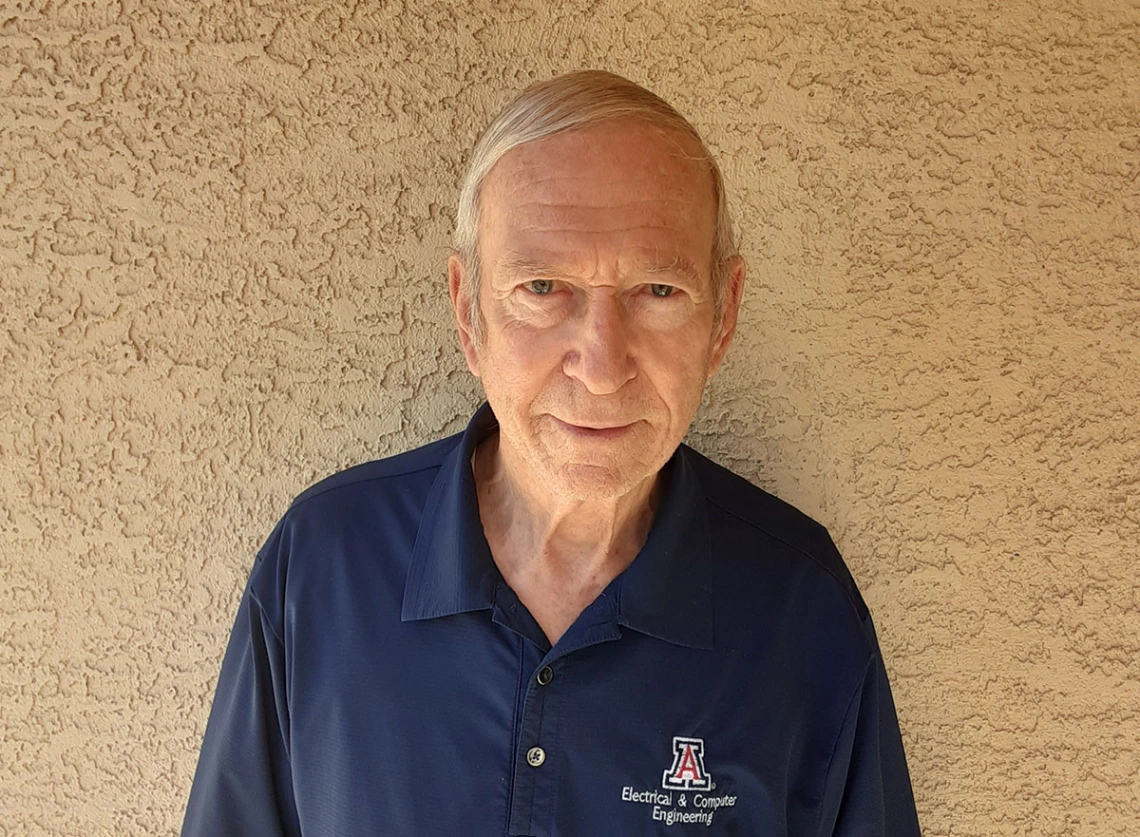One-on-One with Mentor Elmer Grubbs

Elmer Grubbs earned three degrees in electrical engineering – a bachelor’s at the University of Arizona in 1968, a master’s at Arizona State University in 1972, and a PhD at the UA in 1994. Now retired, he has worked for Motorola, Hughes, Raytheon and EOS. His academic career includes a professorship at Northern Arizona University and summer faculty internships at NASA, the U.S. Air Force and C.S. Draper Labs. He was also an associate professor of electrical and computer engineering at the UA and is enjoying his second year as a mentor for Interdisciplinary Capstone.
What inspired you to become a mentor?
I undertook this position during retirement because I love to work with students and help them to be prepared for their future jobs and life. I have taught many senior project classes during my teaching career.
What is your personal experience of having a mentor? How did it help you?
I have had many mentors during my life, including my uncle, Paul Hartman; my algebra teacher in high school, Mr. Jordan; my first boss, Dr. Charles Meyer; Dr. Fred Hill from the UA, and many others. They helped me learn to work hard and inspired me to become a teacher. They set an example of what an engineer should do and what a supervisor should be and how to treat people as a supervisor. I’ve had many mentors in my church, who have taught me how to live ethically and responsibly and to love God and others.
How does being on a mentored design team help students in the professional world?
Being on a mentored design team teaches students to not be afraid to ask for help, to be good team members, to follow a design method, and to write reports and do oral presentations. All of these things are essential for success in an organization as an engineer.
What’s your favorite team or project you have mentored, and why?
When I was an ECE faculty member, I worked with both NASA and a student team that was helping develop a camera system for the Orion space vehicle. As part of the students’ project, they attended a Mars simulation experience in Utah, and at least one of the team members went on to join a commercial space exploration company. I’ve had several students over the years who have been able to work for NASA and commercial space exploration companies, based on their work on senior design teams.
What advice would you offer to others considering mentoring a design team?
It’s a great experience, and definitely worth the effort. It is at times challenging, but it is not only helpful to the students, but will also help the companies that the students go on to work for.
How do employers benefit when they hire students who have been on mentored senior design teams?
Employers will find students who are more prepared than they otherwise would be. They will be better communicators and better teammates and will understand more about engineering design processes.
Tell us something about yourself that people might be surprised to learn.
While teaching at Colorado State University at Pueblo, formerly the University of Southern Colorado, I hosted Ken Mattingly, a NASA astronaut who flew three missions and played a pivotal role in returning Apollo 13 safely to Earth. He was visiting our campus in 1996. I got to ride with him and a driver in a limousine from the airport in Colorado Springs to Pueblo.

